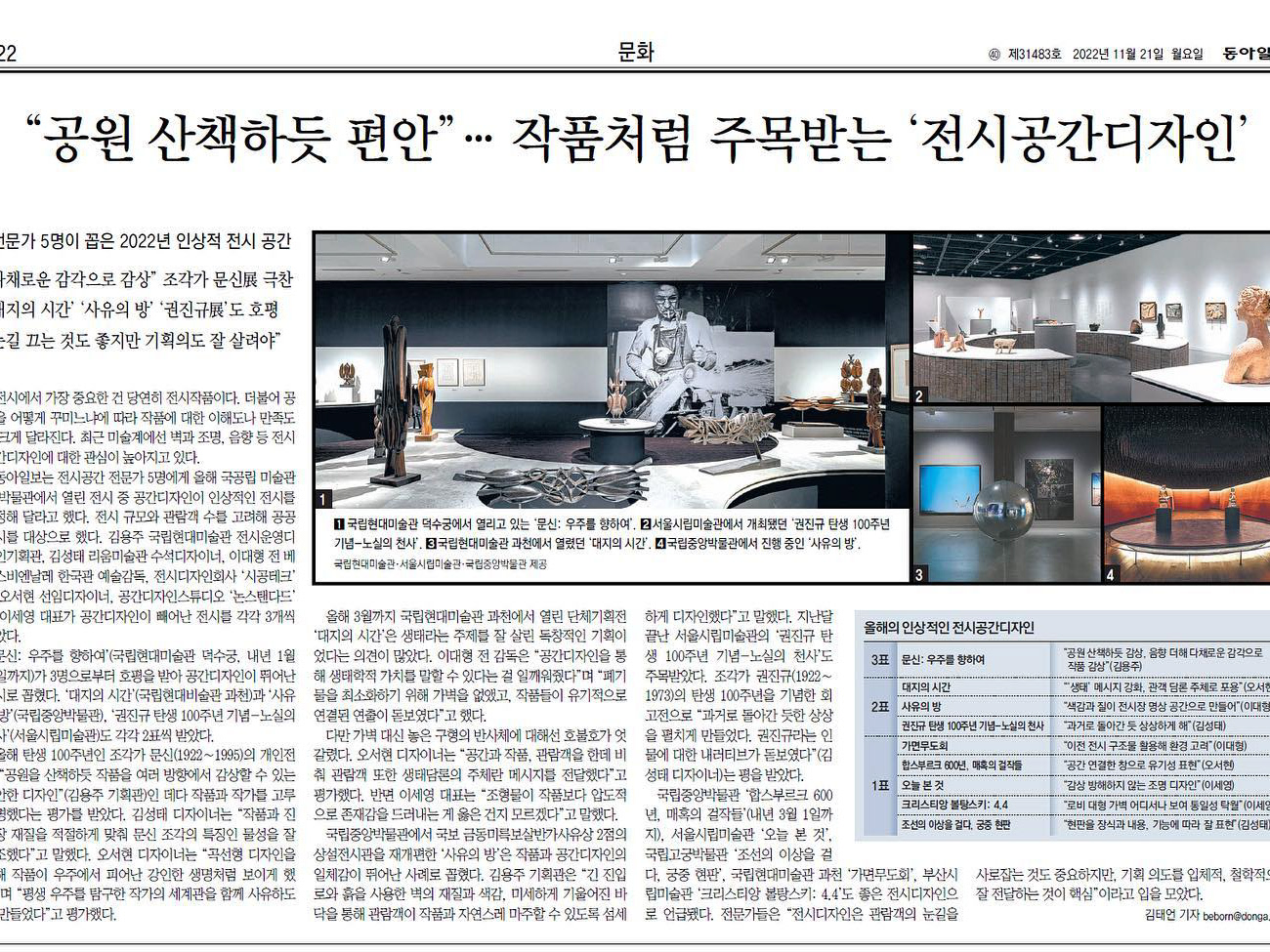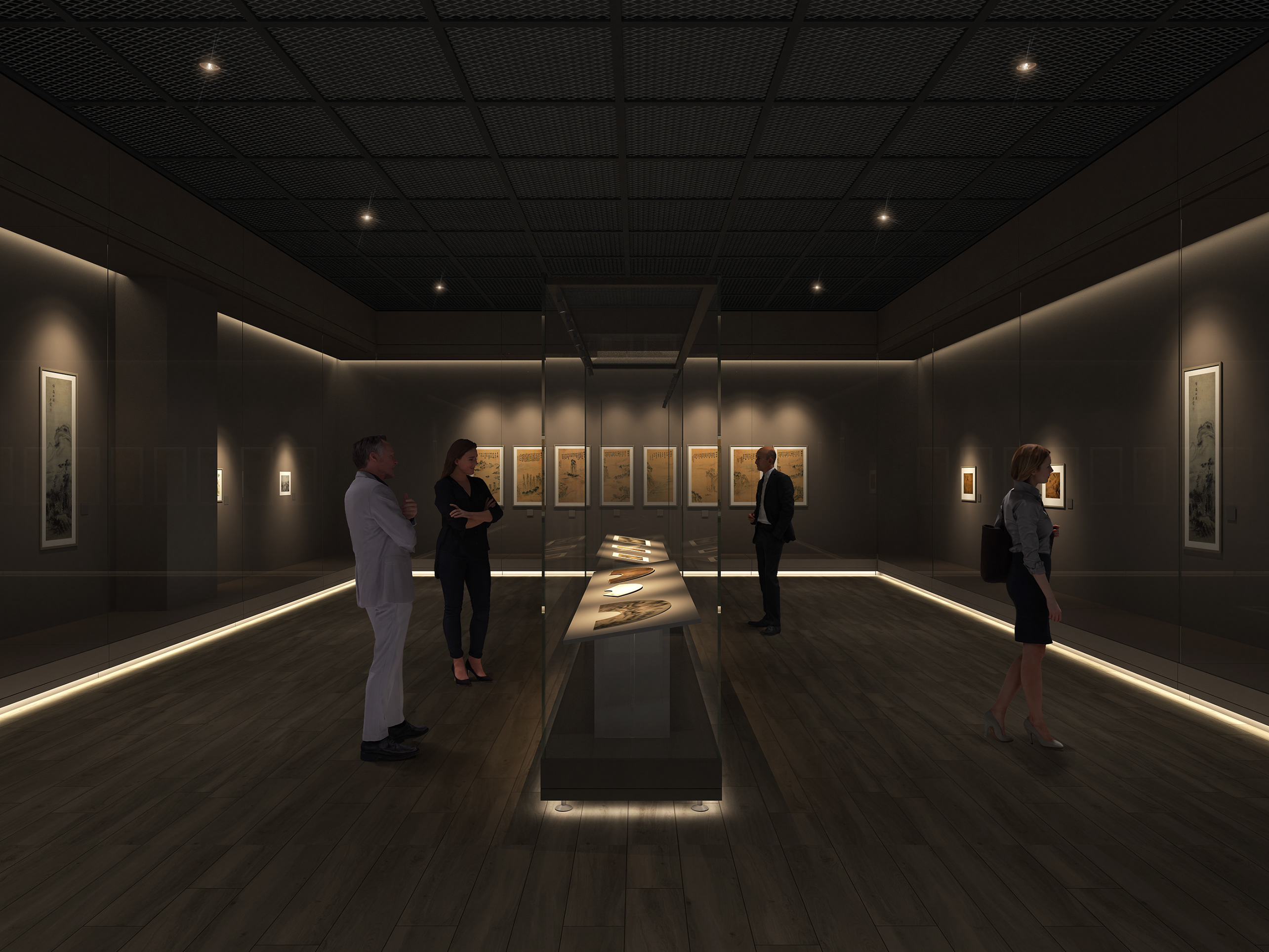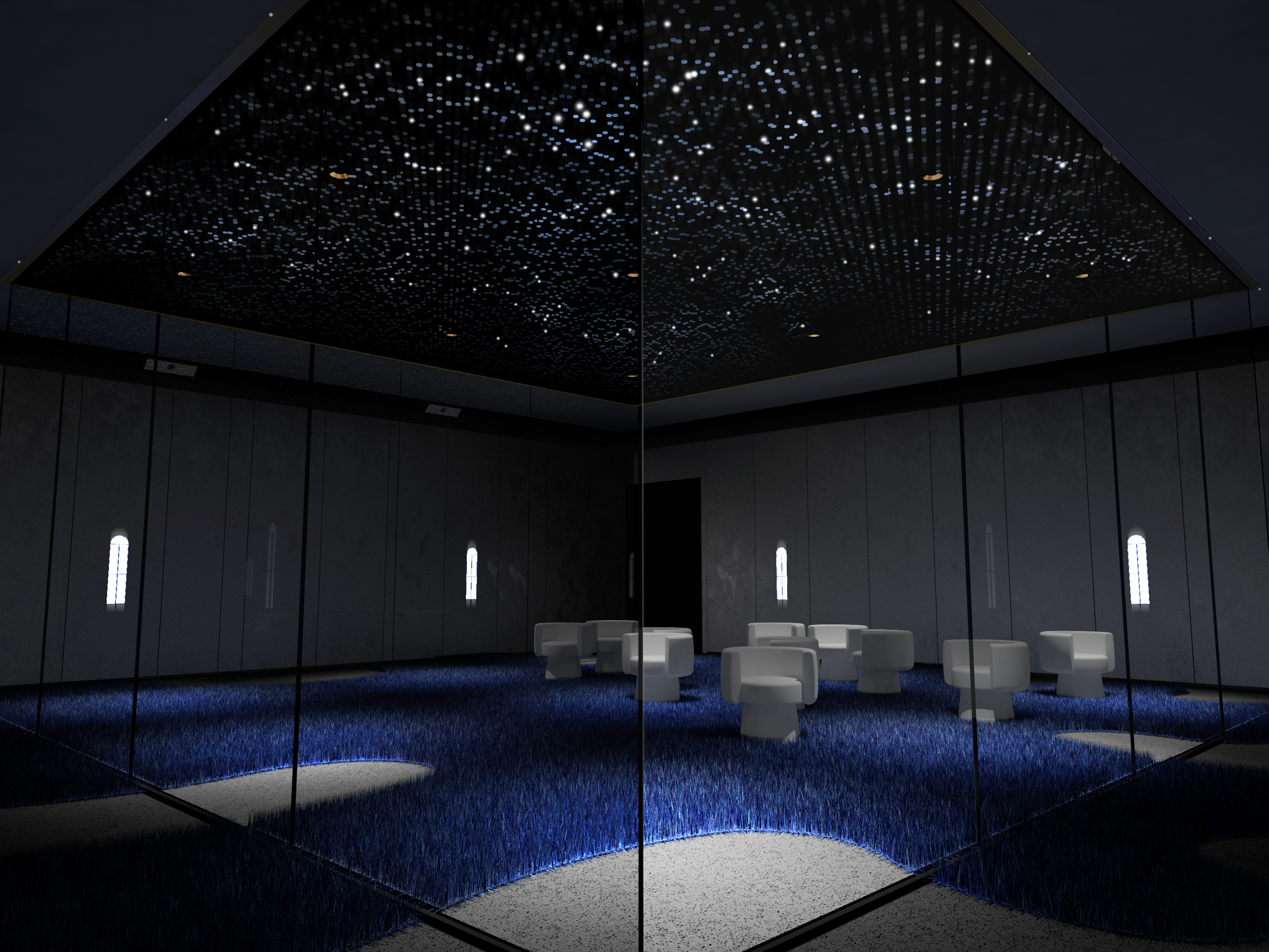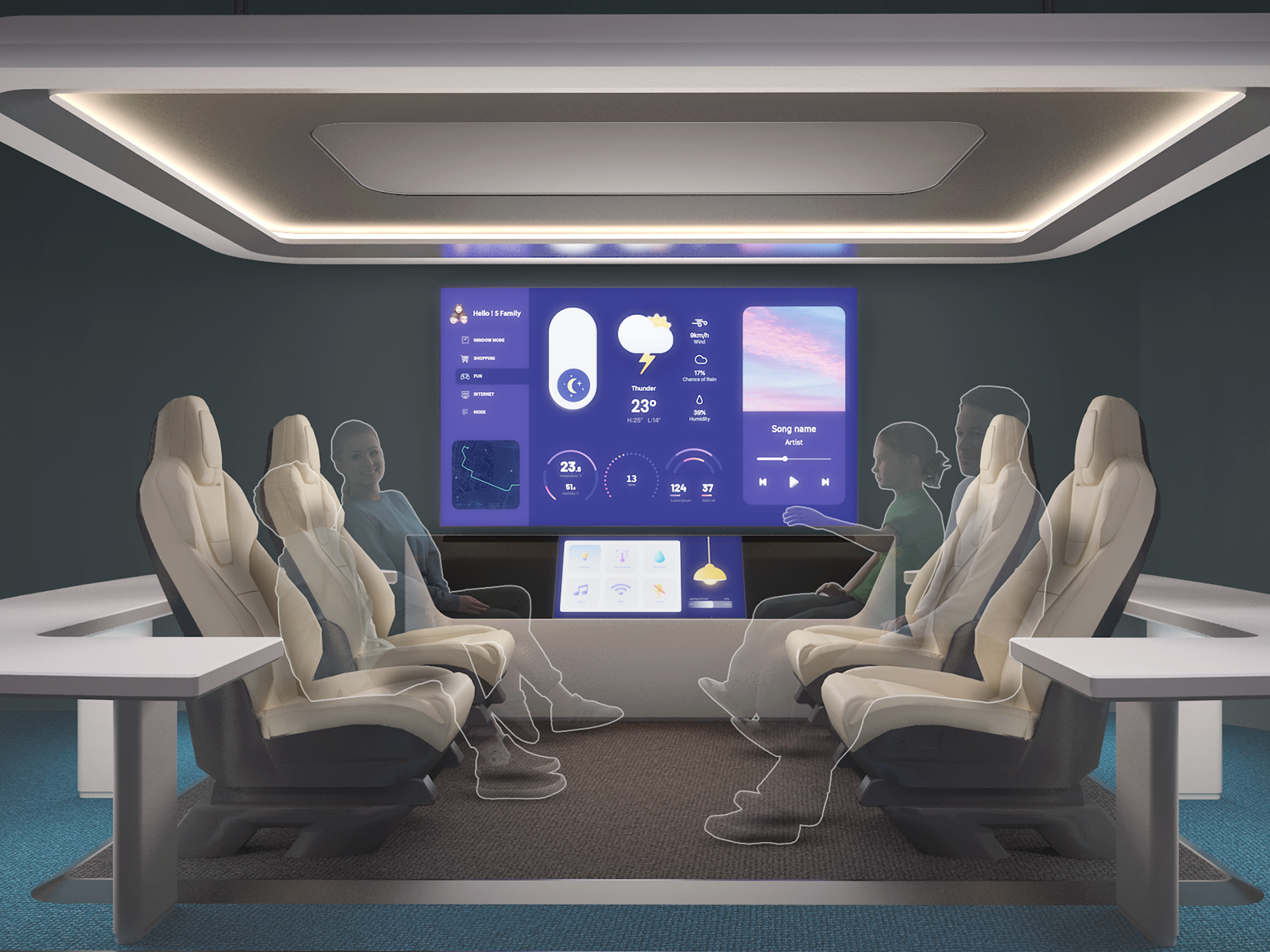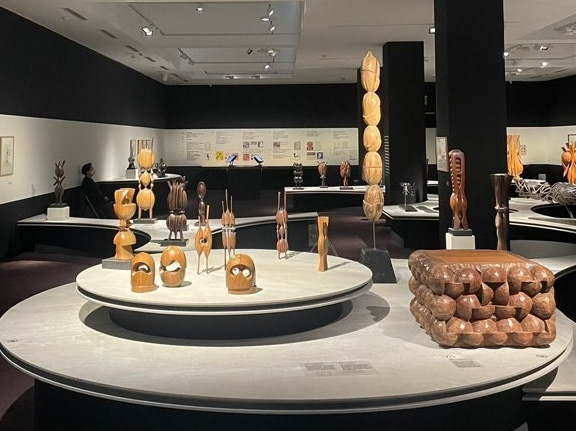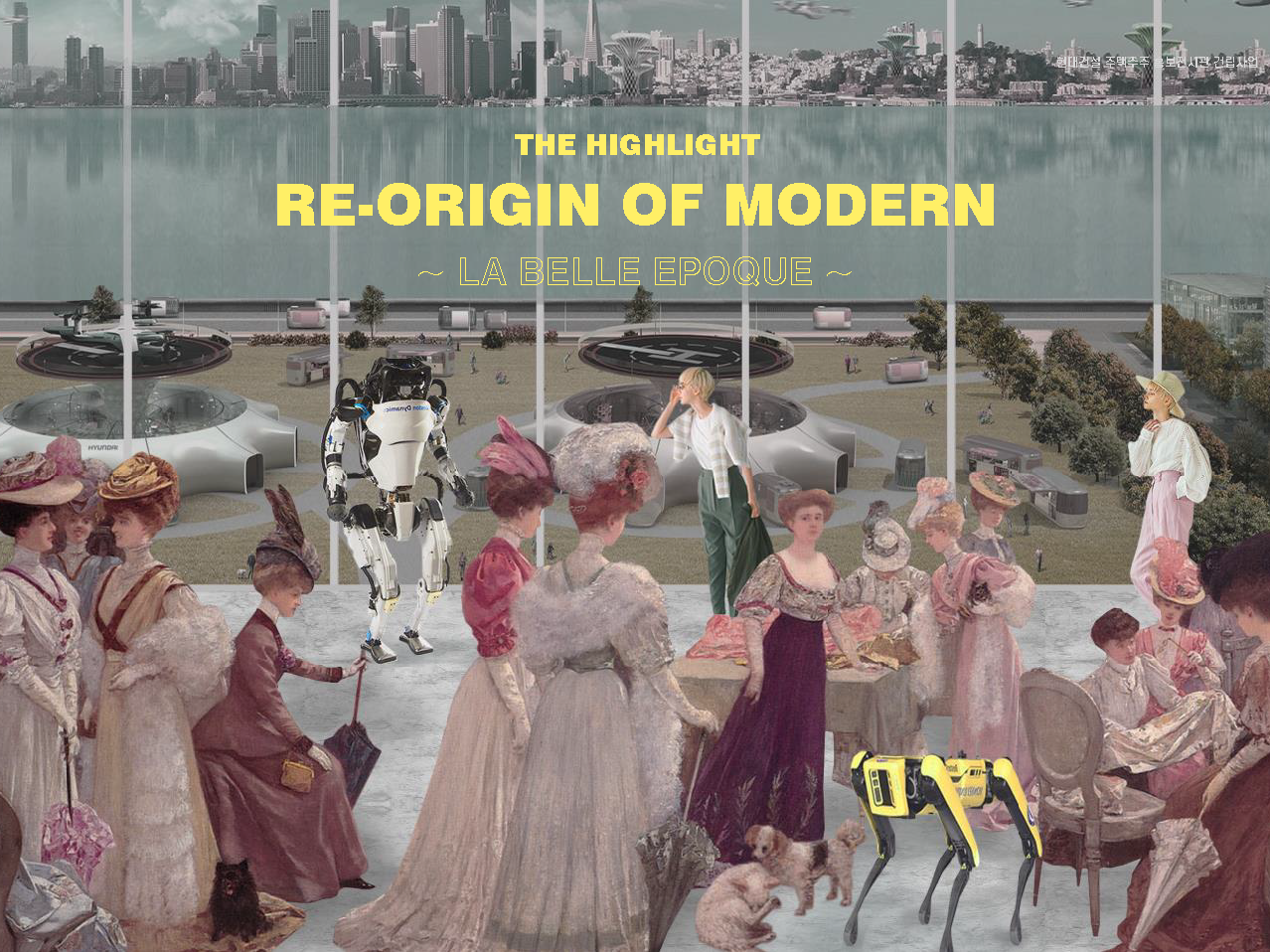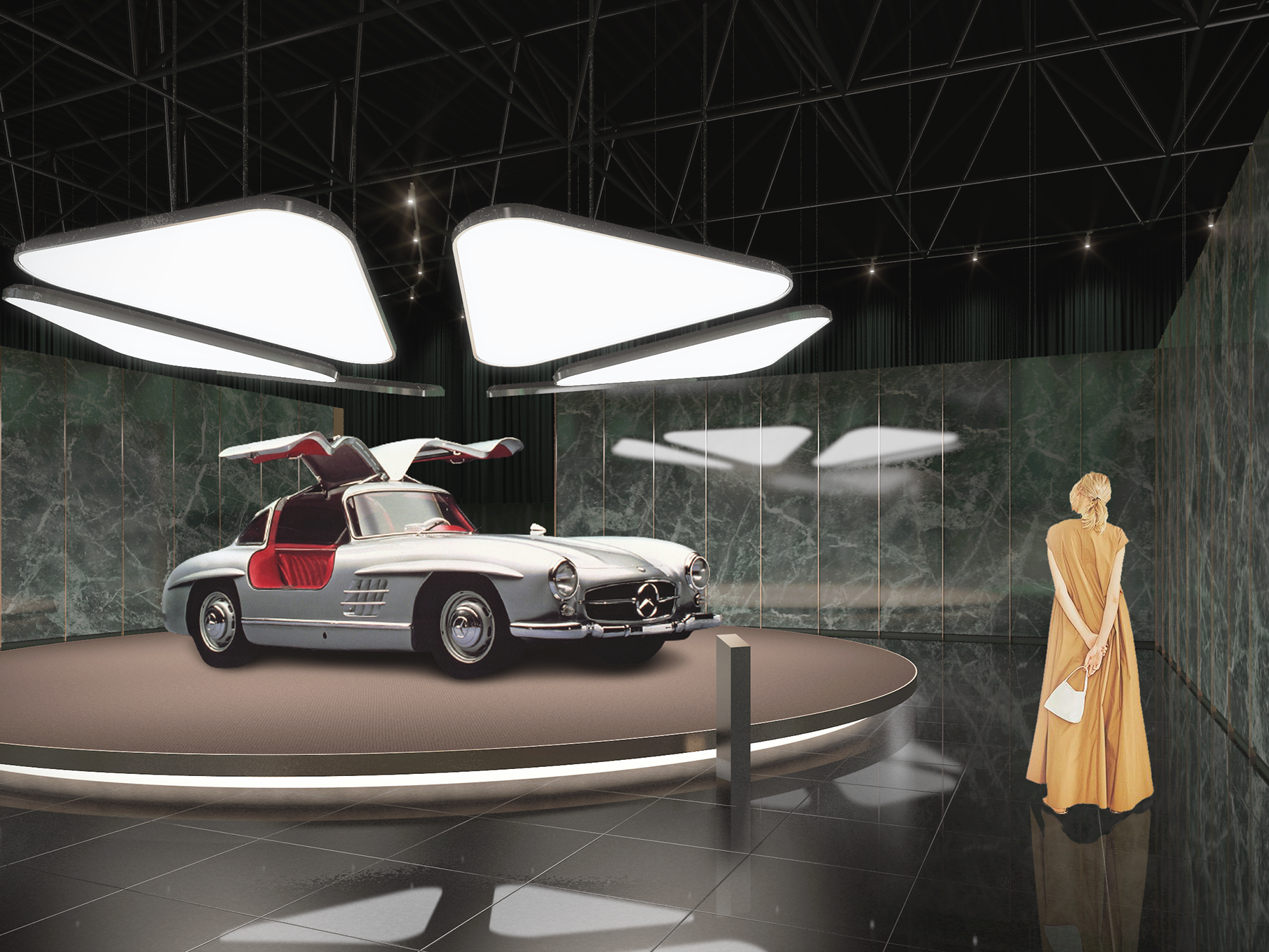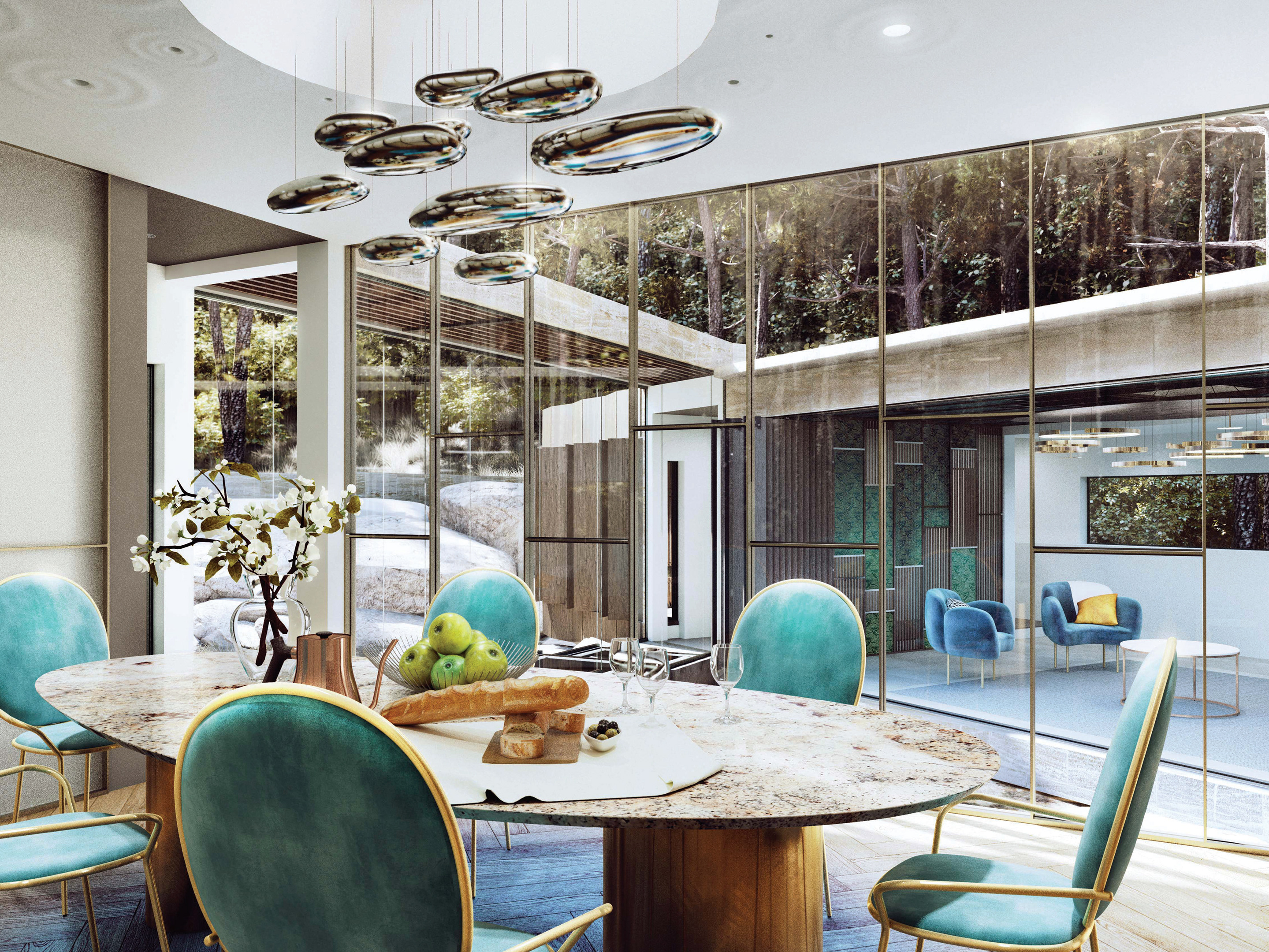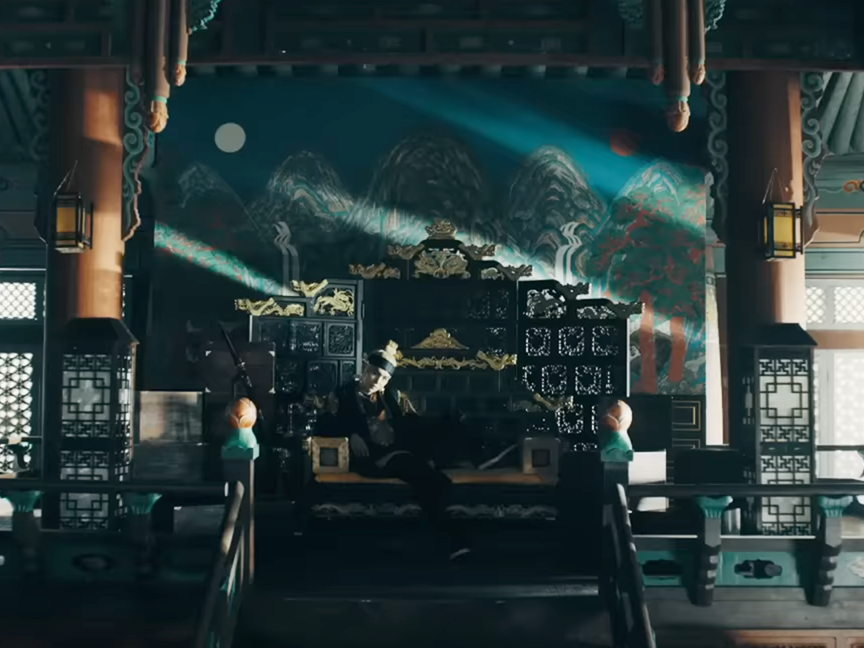PROLOGUE
The National Museum has recently inaugurated a new exhibition room titled 'A Room of Quiet Contemplation.' This space is dedicated to showcasing two pensive Bodhisattva statues, recognized as National Treasures under the numbers no.78 and no.83. These statues are celebrated as masterpieces, epitomizing both Korean heritage and the prestige of the National Museum. Previously constrained by limited space, the museum was compelled to rotate these statues every six months within a smaller area of the Buddhist statue zone. This rotation made it challenging for visitors to fully appreciate both statues simultaneously. The recent renovation has fortuitously resolved this issue, providing ample space for both statues to be displayed side by side, thereby enhancing their accessibility to a broader audience.
The museum engaged Choi Wook, the lead architect from [One O One Architects], to design this unique exhibit room. Characterized by its distinctiveness, the room blends various architectural elements with video media, offering visitors an unconventional exhibition experience. Reviews of the room are mixed, with its divergence from traditional exhibition styles likely fueling the controversy. However, delving into the myriad aspects of this disagreement falls outside the scope of this critique. Instead, the focus here is not to assess the exhibit based on specific criteria, but to explore the interplay between the audience's consciousness and the exhibition's form, thereby sketching an overview of the visitors' experiences.
Before delving into the main content, it's important to outline the structure of this writing. The narrative will sequentially follow a visitor's experience as they explore the exhibit room. The room's design crafts a narrative sequence, and while an audience's experience cannot be neatly divided into discrete parts, breaking it down into 'scenes' proves to be a useful analytical tool. In this framework, 'scenes' act as the foundational units for each paragraph. The narrative in each paragraph will start by depicting the interaction between the space and the visitor's body, then proceed to trace the journey of the audience's consciousness, elucidating its significance. This methodological approach aims to provide readers with a comprehensive understanding of the overall exhibit experience, with a particular focus on the evolution of consciousness.
SCENE 01
Upon passing through the security gate, the visitor begins their ascent on the escalator running along the hall. Reaching the second floor, their attention is immediately captured by a striking black mass. Intrigued, the visitor feels compelled to draw closer, feeling an irresistible pull on their consciousness. As they approach, the words at the entrance gradually come into focus, revealing the name of the space: <A Room of Quiet Contemplation>.


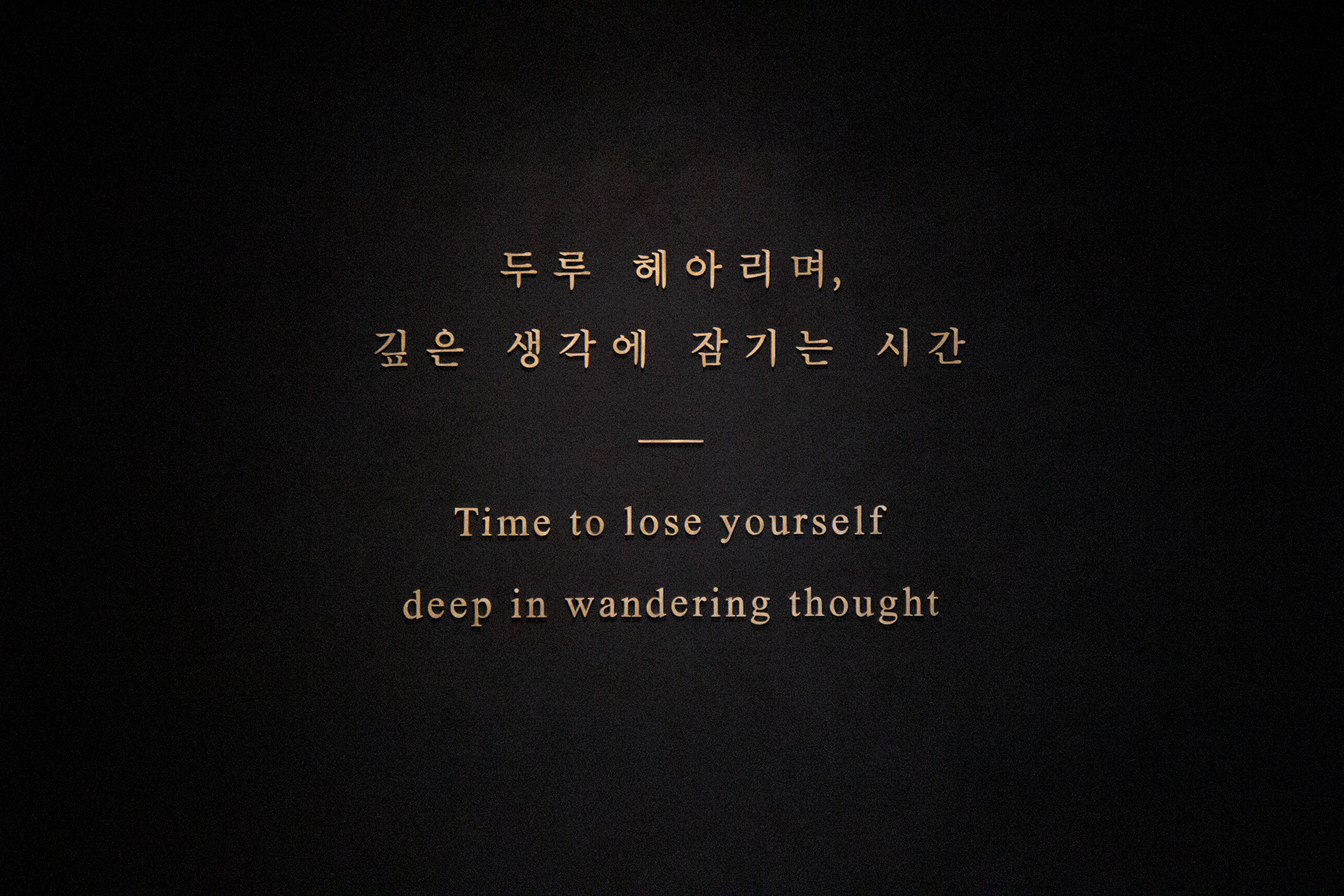
Located in the corner of the second floor, <A Room of Quiet Contemplation> is architecturally highlighted by a black tambour panel that contrasts with the elegant ivory limestone of the entire hall. The architect skillfully avoided an overly extravagant appearance, maintaining a sense of neatness with the panel. The entrance is created by embedding a mass against the wall, functioning as an architectural device to guid visitors inside. At the end of this mass, a concise sentence marks the beginning of the exhibition: "Time to lose yourself deep in wandering thought."
SCENE 02
Upon entering the space, the visitor instinctively turns left towards a dimly lit corridor. Transitioning from the brightly lit hall, their eyes struggle to quickly adapt to the newfound darkness, creating an immediate tension in their body. This abrupt sensory shift amplifies their awareness of the corridor's material aspects. Peripheral elements, such as scent, sound, and bodily sensations, surge to the forefront of their consciousness. The creaking of their footsteps becomes a resonant echo of the interaction between their body and the corridor, sharpening the intentionality of consciousness.
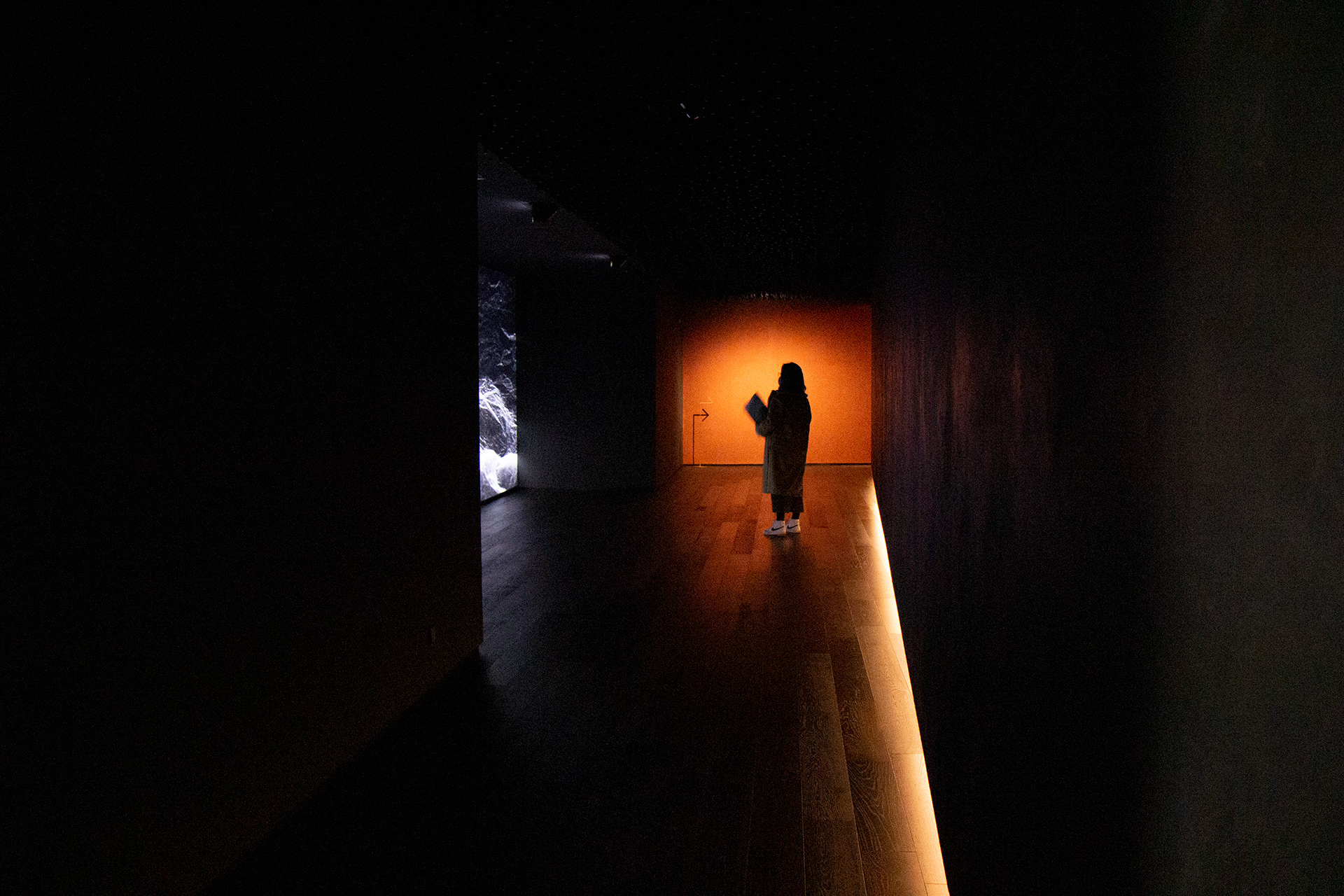
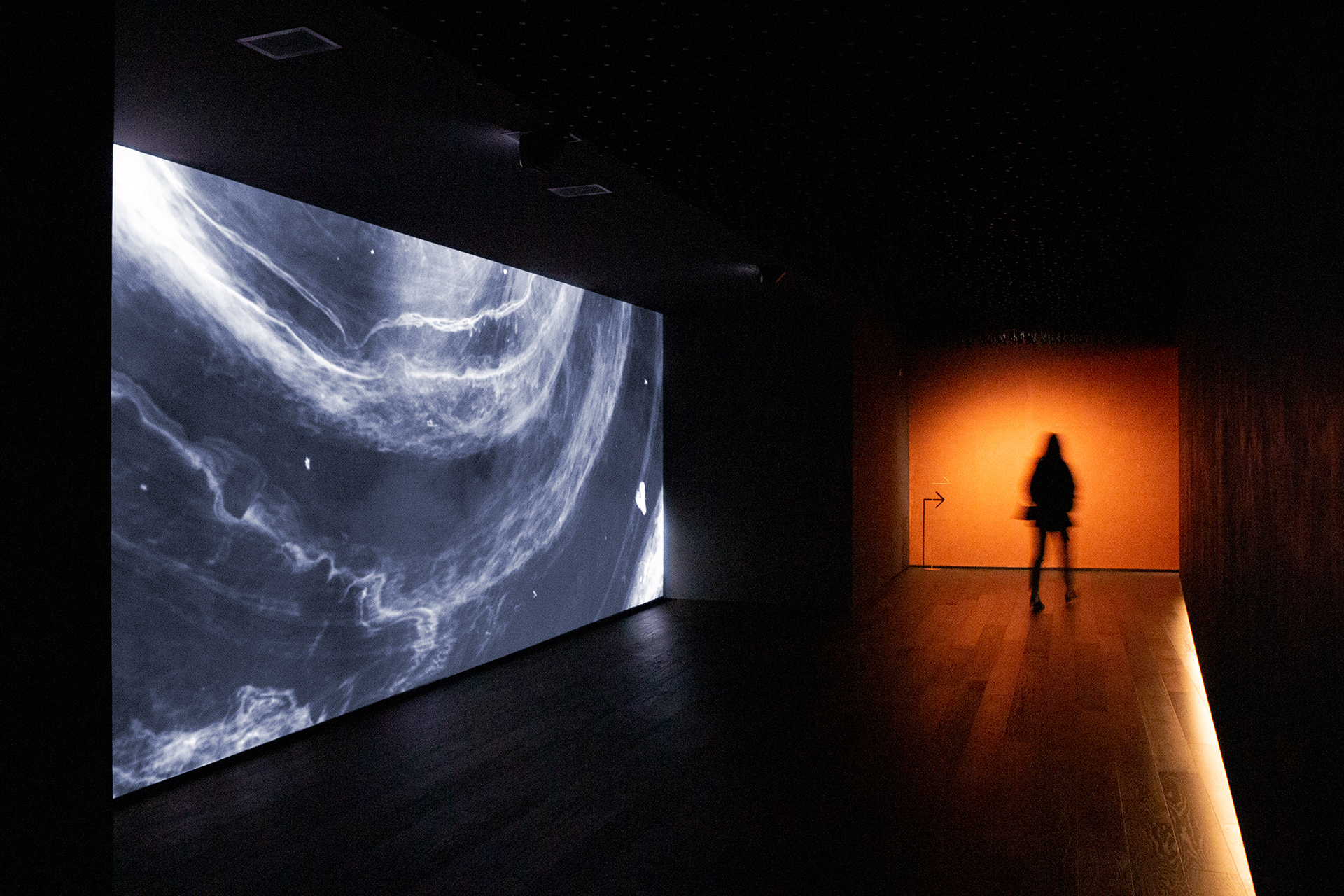
As the visitor's eyes adjust to the darkness, they start to make out the corridor's intricate details. The ceiling, adorned with numerous rods that resemble stars—each tipped in white—contrasts with the meticulously laid dark oak panels on the floor. The side walls notably deviate from parallel alignment; the right wall gently protrudes outward, inducing a sense of unbalanced movement. Although linear indirect lighting accents the bottom of this protruding wall, its allure is somewhat diminished when the visitor's attention is captivated by a fully projected video on the left wall, which restores balance to the spatial composition. This video, created by French media artist Jean-Julien Pous, encapsulates the essence of nature as seen through the lens of Buddhist philosophy, portraying the dynamic transformation of water with striking effectiveness.
Enthralled by the video, the viewer pauses, captivated by the mesmerizing flow of particles that form chaotic patterns, symbolizing the materiality of nature. This abstract representation extends the viewer's consciousness towards a deeper understanding of the true essence of nature. Gradually, they realize that the corridor itself is a symbolic system representing nature: the brown wooden floor as the earth, the dark ceiling as the sky, and the dynamic particles in the video as the material elements circulating between earth and sky (천지, 天地). The viewer's initial focus on their own materiality (아, 我) merges with an awareness directed towards the materiality of nature (물, 物). In this moment, their consciousness aligns with the Buddhist ideal of a holistic connection.(일체, 一體). This experience mirrors the ritual journey in a Buddhist temple, progressing from the outermost gate (일주문, 一柱門) to the innermost shrine (법당, 法堂). Thus, the path to 'A Room of Quiet Contemplation' symbolically reflects a transition from a materialistic view of nature to an idealized state.
SCENE 03
The audience steps toward a room shedding red light at the end of the corridor. There is a small-theater-sized exhibit room. First, the red-colored terracotta wall suppresses the audience. The wall angles outward as rising, with indirect light that washes the wall downward, so this design makes the room look much higher. The floor, covered with the same wooden panel as the corridor, rises forward, making a slope. Also, the ceiling gets lower, so if someone can see the vertical cross-section along the long axis, he can find a wedge-shaped contour that makes the room look much deeper. The illusion of height and depth creates a unique movement in the exhibit room. The audience's view flows along the movement, and at the end of his view, two child-sized figures are sitting on a pedestal.
The audience starts to approach the figures slowly. The slope is not too steep but proper enough for the audience to feel as if moving upward. As they move along the slope, the ceiling gets lower simultaneously. As a result, the audience finds that the slope's angle is steeper than it actually is. Generally, a higher position or place is considered more noble and prestigious than a lower spot, so the audience feels that they are going to a sacred place. Consequently, the materialistic concept of the rising of the body toward pensive Bodhisattva statues is connected to the spiritual concept of the rising from the secular world (사바세계, 娑婆世界) to the ideal heaven (정토, 淨土) where Buddha is staying. During this journey, the audience, whose emotion is elevating, faces the two Bodhisattvas sitting on a large pedestal.
SCENE 04
The two Bodhisattvas look like they are sitting at the center of the cosmos, thinking about eternal time. The large oval-shaped pedestal has two columns at the ellipse's two foci, and the Bodhisattvas are sitting on the columns. The harmonious ellipse seems like the materialized contemplation of the two beings. The audience has to face them standing on the slope, not a flat floor, because the pedestal is located at 3/4 of the slope. This slope is an architectural device leading the audience to the statues. Although the slope is not too steep to be captured by consciousness, the audience's body continuously feels the slope under his subconscious. This means that the slope makes the audience move more than on a flat floor.


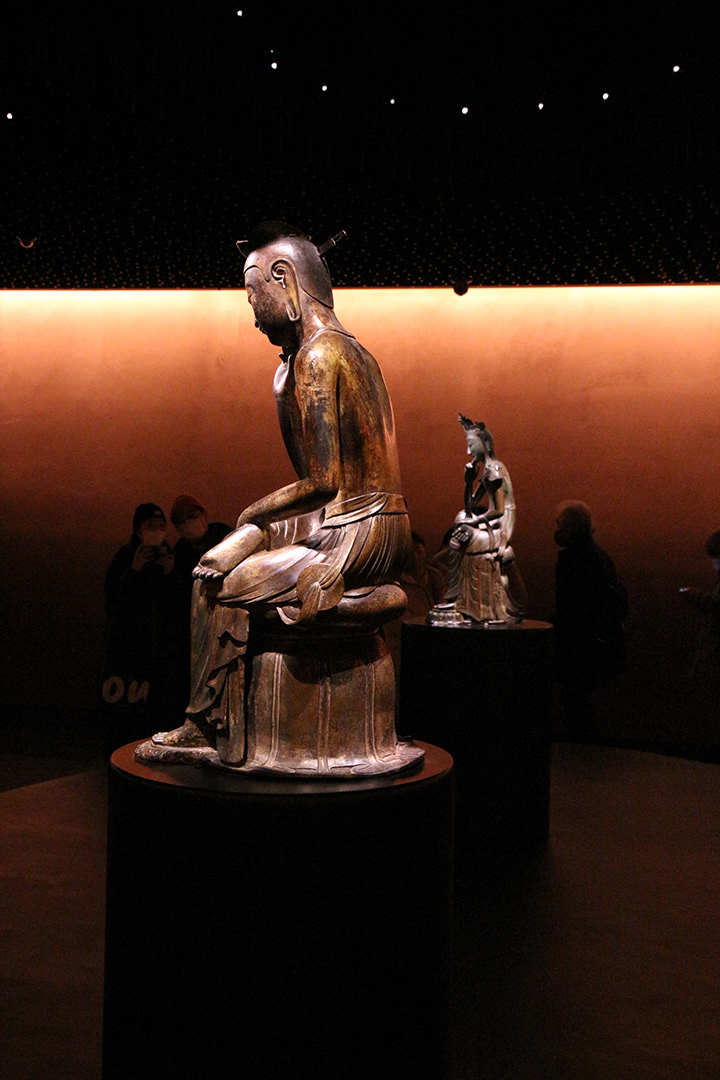
As a result, this movement determines the fundamental exhibit method and attitude. The audience continuously walks along the rim of the pedestal, appreciating the statues from different points. It is a considerably enjoyable experience to appreciate a statue's various silhouettes that continuously change as the viewpoint moves. Moreover, the triangular position formed by one's body and the two statues creates a rich, sensual space sequence. This kind of method resembles art museums' way of treating Modern Sculptures. This method asks people not to read artworks in specific contexts but to see and feel in a purposeless perspective. As a result, the audience concentrates not on the contemplation but on capturing the sensual ripples caused by the interaction between his body and the objects.
SCENE 05
After walking around, the audience faces the statues again. He feels a little shy because the Bodhisattvas seem to see the audience's excited feelings. He tries calming down the excited feelings and diving into their contemplation together. However, it looks difficult for the audience.

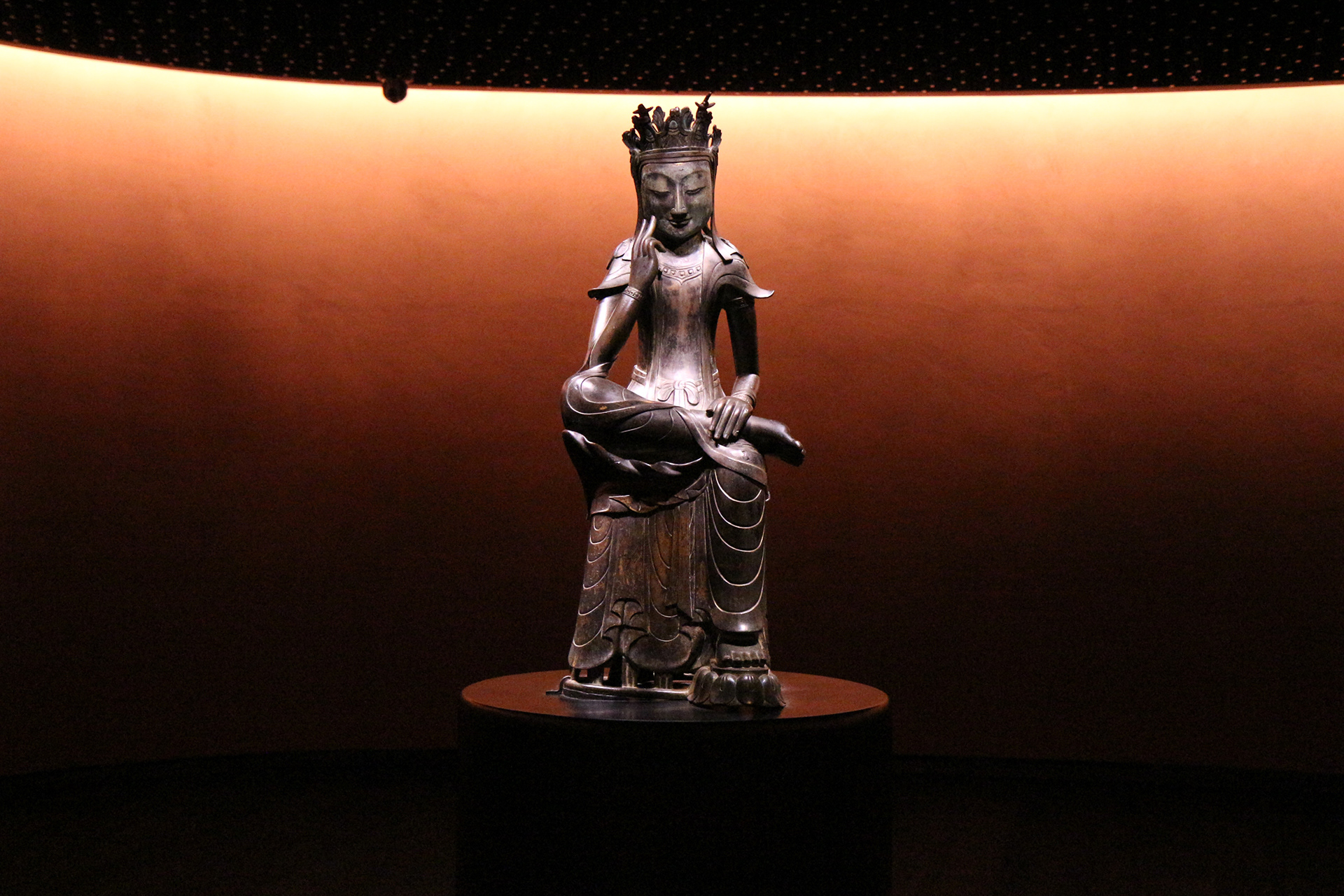
The audience hears a creaking sound, which did not suddenly appear but had existed and just came into the center of consciousness. As he looks around, other people are walking around the statues. The sound starts between the people's feet and the wooden floor and echoes throughout the room. Another person comes close, holding his arms forward with a smartphone to take pictures. Hearing the creaking and shutters, he cannot concentrate anymore and decides to leave the room.
SCENE 06
The audience goes down along the slope and leaves the room. The exit is another corridor starting in the corner opposite the entrance. When entering the corridor, the bright light of the hall lets him know the end of the exhibition. At the left side of the exit, there are free postcards with pictures of pensive Bodhisattva statues. The lingering feeling of the exhibition remains in the cards.
EPILOGUE
<A Room of Quiet Contemplation> is an Exhibition. In other words, it is an attempt to define the form of communication between audiences and content. The content contains both material things such as space, media, artworks, artifacts, and conceptual things such as religion, history, science, philosophy, or such things. The form is the frame defining the boundary of an exhibit experience by navigating audiences' consciousness.
The central theme of this critique is the journey of consciousness. In the body of this reading, we traced the path of an audience's consciousness along his journey. In this journey, we found an intense action that led the audience's consciousness to the materiality of objects. This characteristic caused by its form is the most significant difference that makes this exhibition unique. That is a type.
This type becomes more apparent when we compare the new room with the former one. The former room had a different type of form and experience. To compare, let me briefly introduce the former room.
The room was about 30 square meters, placed on the side of the Buddhist statue zone. Even the room is still there but is used for other statues. It was too small compared to the new room, but considering it was only for one statue, it was sizable enough. At the center of the room is a four-sided glass showcase where The Bodhisattva sat. All the walls were dark except one red side behind the statue, so it made the statue stand out more. It was unusual for the room to be crowded, but even when there were a dozen people, it was quiet without footsteps or buzz. This is because the room's atmosphere made the people behave carefully. Moreover, there were several stools, so when nobody was in the room except me, I spent a long time sitting on a chair and facing the Bodhisattva.
The room has no name, but "A Room of Quiet Contemplation" would fit nicer to the former room. This is because the room's form allows people's consciousness to fly beyond the materiality of statues and to the abstract concepts beneath the statues' skin. In other words, this form suggests contemplation to audiences. The room's components are like a guide on the journey: the size regulating the number of audiences, the moderate design, the dark illuminance, the glass showcase, and the stools for rest. Due to the components, the room had a proper atmosphere for deep thinking. That is a type also.
There are no differences in content between the two rooms. However, it is the formal aspects that differentiate one room from another. These forms are being independent regardless of any valuations. The exhibition directors meticulously select a form based on diverse criteria, and the judgments on controversial issues in the exhibit field often become the criteria. Therefore, these forms can only exist under specific valuations. For this reason, evaluating an exhibition is the same as assessing the selection and judgments beneath its form. Also, <A Room of Quiet Contemplation> resulted from particular judgment and selection.
Through this reading, we found a unique exhibit experience led by a form. Additionally, we revealed the characteristics more obviously by comparing the room to the former one. If we can identify a form, we also identify the selection and judgments beneath the form. Therefore, we can start another critique by exploring the various issues and ideas related to the room. It would be an interesting work encompassing various exhibit discourses in the contemporary from many different points of view. However, as I stated at the beginning of this reading, it is far beyond the boundary of this critique. Therefore, this critique ends here. However, I hope the unfinished story will continue in readers' contemplation.
Photo & Writing / Seuhyun Oh
